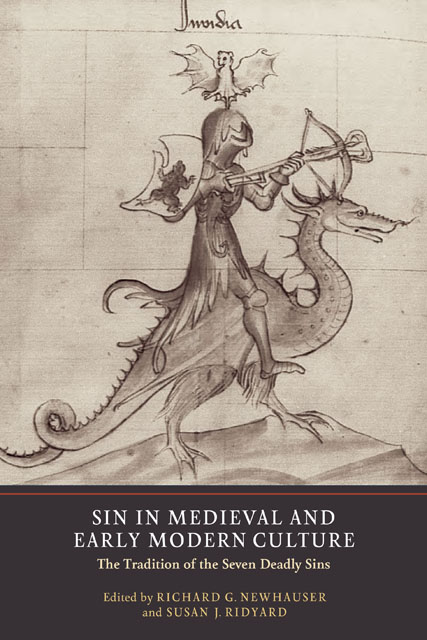8 - The Seven Deadly Sins in Medieval Music
Published online by Cambridge University Press: 28 February 2023
Summary
There is scant evidence of the seven deadly sins in medieval music, compared with the manifold treatment of this theme in theology and art. Early sacred texts set to melody were based almost exclusively on the Bible, sources of which predate the first Western teaching against the sins. Even when composers began to use their own texts, the sins only rarely commanded their attention. This article deals with the small but fascinating repertory of music on the seven deadly sins from the thirteenth and fourteenth centuries: several conductus and motets from works of Philip the Chancellor, Guillaume de Machaut and the Roman de Fauvel. These unique pieces, straddling the divide between liturgical and pedagogical music, are shown to have unusually dramatic texts that often addressed the sins directly. In the fifteenth century, these works disappeared, replaced by music that expressed the idea of defeating the sins through the use of musical symbols rather than by singing their names aloud.
Musical representation of the seven deadly sins is surprisingly scarce in comparison with its counterparts in other aspects of Western medieval culture. Theologians from the earliest centuries of Christianity expound in countless genres on the hazards of the sins, and artists delight in depicting them as cautionary images in painting and sculpture. But the echo in music is muted at best, and reasons for this dearth are understandable. The first liturgical music of the Western tradition arose out of a desire to heighten verbal expression in worship. Until the late eighth century, texts set to melody were based almost exclusively on the Bible, the sources of which predate the advent of Western teaching against the deadly sins by the desert Fathers. Even when composers began to use religious texts of their own creation, however, the seven deadly sins as a topic only rarely commanded their attention.
To be sure, many musical texts discuss sin in general terms, drawing on the vast array of admonitory teachings contained in the Bible and elsewhere in theological writing. A chant might, for instance, deal with the ‘evil beast [who] … devoured my son Joseph’ (Genesis 37. 33) without naming its allegorical equivalent, the sin of envy, as seen in the responsory Videns Jacob given below:
Videns Jacob vestimenta Joseph, scidit vestimenta sua cum fletu, et dixit: Fera pessima devoravit filium meum Joseph.
- Type
- Chapter
- Information
- Sin in Medieval and Early Modern CultureThe Tradition of the Seven Deadly Sins, pp. 191 - 222Publisher: Boydell & BrewerPrint publication year: 2012

